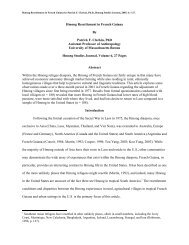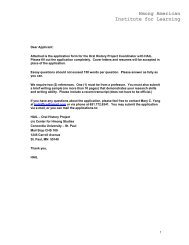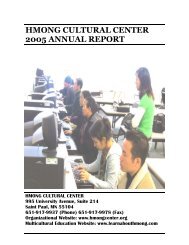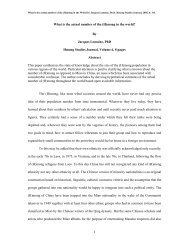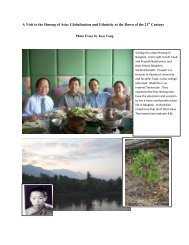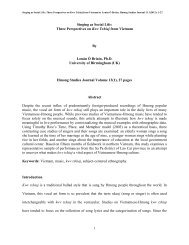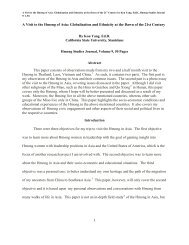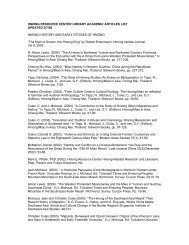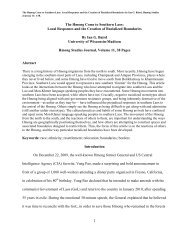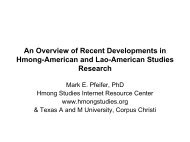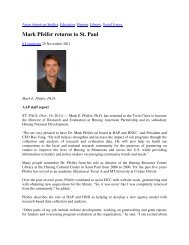Hmong and Lao Refugee Women - Hmong Studies Internet ...
Hmong and Lao Refugee Women - Hmong Studies Internet ...
Hmong and Lao Refugee Women - Hmong Studies Internet ...
You also want an ePaper? Increase the reach of your titles
YUMPU automatically turns print PDFs into web optimized ePapers that Google loves.
<strong>Hmong</strong> <strong>and</strong> <strong>Lao</strong> <strong>Refugee</strong> <strong>Women</strong>: Reflections of a <strong>Hmong</strong>-American Woman Anthropologist by Dia Cha, Ph.D. <strong>Hmong</strong> <strong>Studies</strong> Journal,<br />
2005, 6: 1-35.<br />
Before the war, for example, both men <strong>and</strong> women worked to raise domesticated animals; before<br />
the war, both men <strong>and</strong> women worked the fields to raise corn, garden vegetables, <strong>and</strong> rice. Such practices<br />
relative to traditional subsistence altered during the war, however, as the nature of activity shifted to meet<br />
the requirements of what was increasingly a cash economy. With men enlisting in ever-increasing<br />
numbers in exchange for cash wages, the male became the main source of income. Even as the men were<br />
away in battle, many women were forced by the hostilities to move constantly from place to place with<br />
their children <strong>and</strong> the elderly in tow. This movement restricted the extent to which the female could<br />
engage in agricultural activities, thus accelerating what was already a significant dependency on the<br />
mercenary wages of male family members. Many men, as well, became increasingly preoccupied with<br />
the give <strong>and</strong> take of membership in an array of political factions <strong>and</strong> with the political condition of the<br />
nation. While such new involvement bestowed prestige, political power, <strong>and</strong> authority upon the male, the<br />
female was left with all the burdens involved in family care. In this manner, the cares <strong>and</strong> responsibilities<br />
with which women were forced to deal increased incrementally at precisely the time they found the<br />
erstwhile stability of their social institutions considerably diminished, not to mention the emotionally<br />
reassuring presence of their husb<strong>and</strong>s. That this was a tremendous strain goes without saying; in addition,<br />
however, it served gradually to lower the woman's status <strong>and</strong> self-esteem as she passed from the role of<br />
active partner in family maintenance to a marginalized figure in an increasingly political l<strong>and</strong>scape in<br />
which cash, rather than labor per se, was the valued currency.<br />
Shifts in the Nature of Camp Activity<br />
The many changes in ancient traditions necessitated by the exigencies of camp life were by no<br />
means all unwelcome to the women residents. As but one example, women were no longer forced to<br />
move constantly; indeed, they could not. <strong>Women</strong> were, as well, freed from many of the labor-intensive<br />
duties routine in the traditional setting. These included the clearing of l<strong>and</strong> – an activity of particular<br />
importance for upl<strong>and</strong> farmers; the collection of thatch, bamboo <strong>and</strong> other housing materials; planting <strong>and</strong><br />
weeding staple crops; the harvesting <strong>and</strong> threshing of rice; rice pounding; feeding livestock; gardening;<br />
fetching firewood; <strong>and</strong> foraging for wild vegetables (Chagnon 1992). In both the camps <strong>and</strong> in <strong>Lao</strong>s,<br />
10




